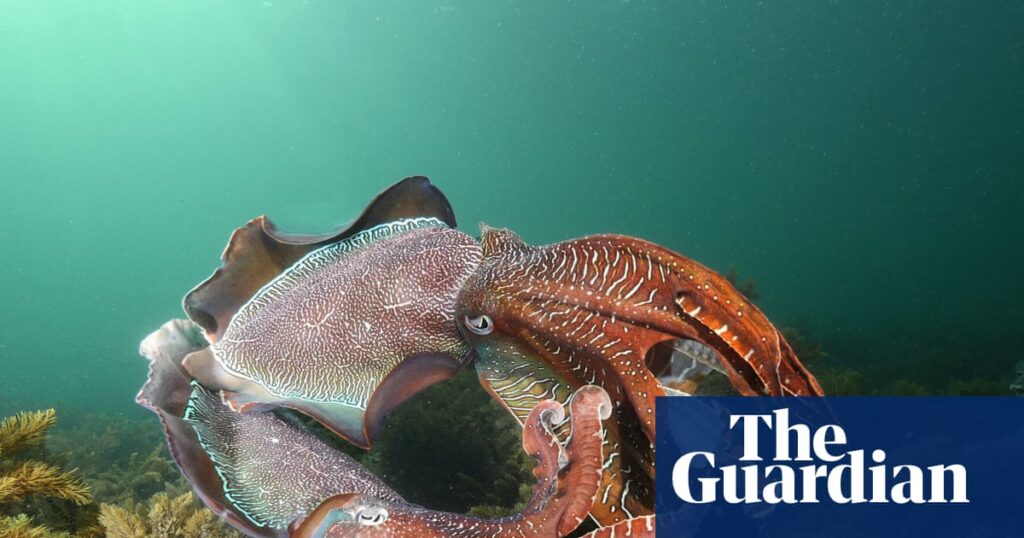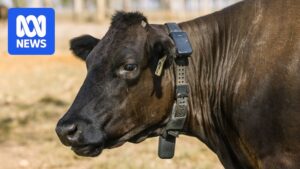
A pioneering “bubble curtain” has been deployed in South Australia’s Spencer Gulf to protect the giant Australian cuttlefish from a potentially catastrophic algal bloom. This emergency measure aims to prevent a “near-extinction event” as the toxic bloom threatens the cuttlefish’s critical breeding grounds at Point Lowly.
Each year, tens of thousands of these marine creatures gather off the coast of Whyalla in a globally unique phenomenon to breed. However, with hatchlings expected to emerge in late spring, scientists are alarmed by the presence of the toxic algae, which is advancing northwards towards their habitat.
Technology and Implementation
The experimental bubble curtain spans 200 meters by 100 meters and is funded by both state and federal governments. Installed this week, it is currently undergoing testing. The technology involves land-based generators and compressors that pump air through underwater lines, creating bubbles that form a protective barrier to disrupt algae movement and shield approximately 50,000 to 80,000 cuttlefish eggs and hatchlings.
This approach has been successfully tested in Western Australia to protect kelp from fish, but it is the first time such a scale is being attempted in South Australia.
Scientific Insights and Concerns
Dr. Zoe Doubleday, a cuttlefish and octopus expert at the University of South Australia, emphasizes the uniqueness of this natural event.
“It’s the only population of giant Australian cuttlefish – and only population of cuttlefish worldwide – that comes together and breeds in their tens of thousands and forms this spectacular natural wonder,”
she said.
Describing the bubble curtain as a “worst-case scenario measure,” Dr. Doubleday explained that it will be activated only if the algae approaches the eggs or hatchlings. The lifecycle of these cuttlefish means that after spawning, the adults die, leaving the eggs as the sole hope for the species’ continuity.
“Because mum and dad die, these eggs are essentially it,”
Doubleday noted.
“If the bloom does reach them – and they take three to five months to incubate and hatch – they could have potentially a near-extinction event.”
Broader Implications and Future Prospects
Prof. Gretta Pecl from the University of Tasmania’s Institute for Marine and Antarctic Studies, who is also a member of the Biodiversity Council, highlighted the importance of this trial. She stated that it is crucial to test the effectiveness of such techniques as algal blooms become more frequent due to climate change.
The latest report on the harmful algal bloom, released on Wednesday, showed that marine heatwave conditions, a contributing factor, had subsided. However, satellite imagery revealed elevated chlorophyll levels, indicating high algae concentrations along the western coastline of Spencer Gulf, up to Murninnie Beach, approximately 90km from the Cuttlefish Coast Sanctuary Zone.
Current estimates place the giant cuttlefish population at about 63,400 this season, a decline from 81,420 in 2024. This underscores the urgency of protective measures.
Government Response and Next Steps
South Australia’s Premier, Peter Malinauskas, affirmed the government’s commitment to safeguarding this iconic species.
“The giant Australian cuttlefish is an iconic and spectacular creature,”
he stated.
“The state government is doing everything it can to ensure this precious population survives the algal bloom.”
The bubble curtain represents a critical intervention in the face of environmental challenges. As testing continues, the scientific community and local authorities remain vigilant, prepared to activate the curtain should the algae approach the vulnerable cuttlefish eggs. This innovative approach could set a precedent for future conservation efforts in marine environments threatened by climate change and ecological disruptions.






